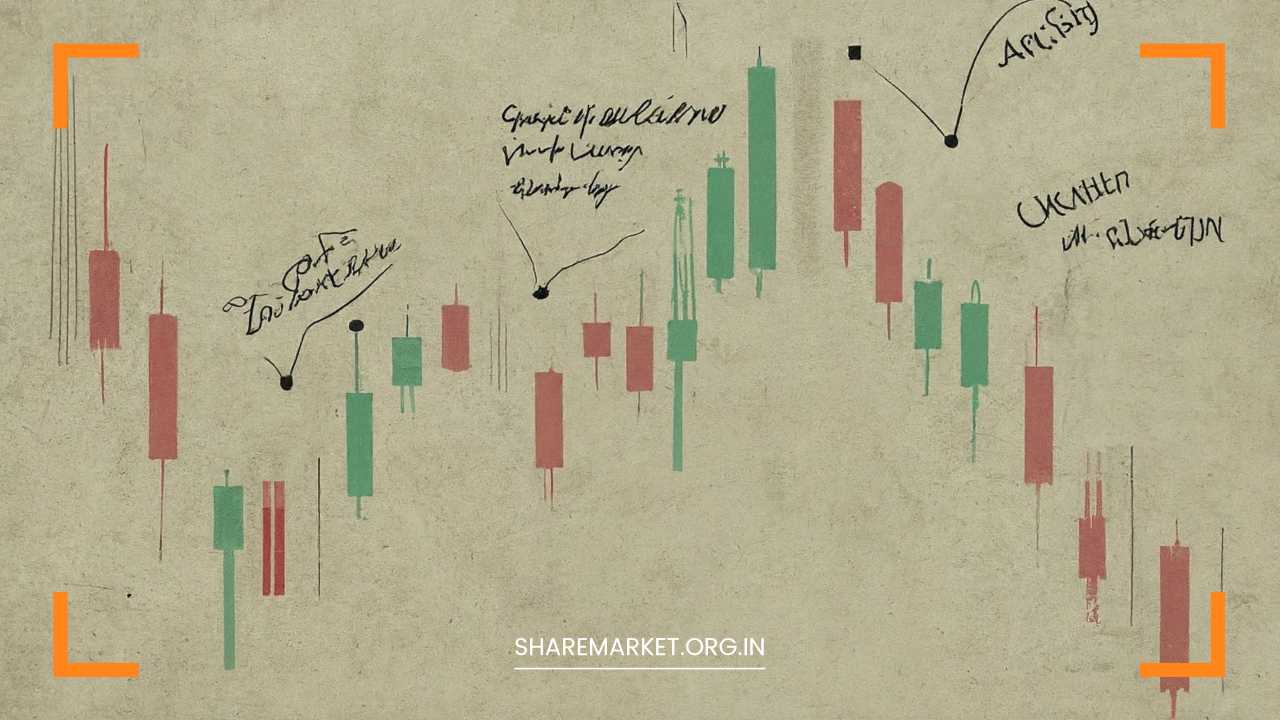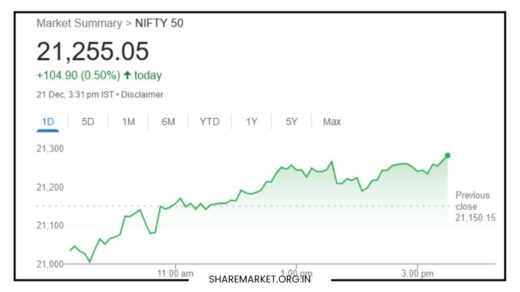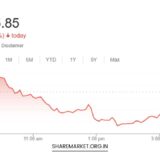What is Upper Circuit and Lower Circuit in Share Market

What is Upper Circuit and Lower Circuit in Share Market
Before delving into upper and lower circuits in share markets, it is important to understand the concept of circuit breakers.
These regulatory mechanisms impose restrictions on the movement of benchmark indices within a predetermined range.
They establish upper and lower limits that cannot be breached. These limits are commonly referred to as circuit breakers, circuit filters, or circuits.
Similarly, individual stocks have their own price bands known as stock price bands, with upper circuits acting as ceiling prices and lower circuits as floor prices.
The purpose of implementing circuit breakers in the stock market is to achieve several objectives. Firstly, they aim to prevent panic selling, which can exacerbate market downturns and lead to severe price declines.
By introducing circuit limits, trading activity is temporarily halted or restricted when prices reach the upper or lower limits. This pause allows market participants to reassess their strategies and prevents knee-jerk reactions.
Secondly, circuit breakers serve to curb excessive stock accumulation. In situations where a stock’s price is rapidly increasing, circuit breakers can temporarily suspend trading or impose restrictions to prevent a speculative frenzy.
This helps maintain market stability and discourages excessive speculation.
Lastly, circuit breakers aim to mitigate intense market volatilities. Sudden and extreme price fluctuations can create an environment of uncertainty and hinder efficient trading.
By setting limits on price movements, circuit breakers provide a level of predictability and stability to the market.
It is important to note that circuit limits can vary across different markets and individual stocks. Regulatory authorities determine these limits based on factors such as market conditions, trading volume, and overall market stability.
These limits are periodically reviewed and adjusted as needed to ensure their effectiveness.
In conclusion, circuit breakers play a crucial role in maintaining market order, curbing extreme price movements, and safeguarding against excessive volatility.
By imposing upper and lower limits on price fluctuations, they provide a measure of control and stability to the stock market.
Advantages and Disadvantages of Stock Market Circuit Breakers
Stock market circuit breakers have both advantages and disadvantages. Let’s take a look at each:
Advantages of Stock Market Circuit Breakers:
1. Time for Reflection
Circuit breakers provide traders with a pause in trading activity, allowing them to reconsider their investment decisions.
The temporary halt gives traders an opportunity to digest news and announcements, enabling more informed decision-making before resuming trading.
2. Avoidance of Panic Situations
Circuit breakers help prevent panic situations by promoting orderly market functioning.
When market volatility reaches extreme levels, the circuit breakers provide a cooling-off period, allowing emotions to settle and preventing irrational trading behavior.
Disadvantages of Stock Market Circuit Breakers:
1. Limited Real-Time Pricing
During a circuit breaker halt, real-time price movements are suspended. This means that traders cannot access up-to-date pricing information, which can impact their ability to make immediate trading decisions based on market conditions.
2. Potential Information Imbalance
Early investors who receive news or information before a circuit breaker is triggered may have an advantage over other traders.
They can react to the information before the trading halt, potentially benefiting from price movements once trading resumes.
Traders who are not privy to this information may experience losses if they had made plans based on market conditions before the circuit breaker came into effect.
It’s important to note that circuit breakers are implemented to maintain market stability and prevent excessive volatility.
While they provide certain benefits, they also have limitations that traders should consider when navigating the stock market.
Who Decides Circuits ?
The Securities and Exchange Board of India (SEBI) is responsible for determining the circuit limits for market indices in India.
The exchanges, such as the National Stock Exchange (NSE) and the Bombay Stock Exchange (BSE), calculate these circuit limits based on the guidelines provided by SEBI.
The circuit breaker rules for market indices in India are established to control extreme price movements and ensure market stability.
These rules specify the percentage thresholds at which circuit breakers will be triggered. The circuit limits are set at 10%, 15%, and 20% stages.
To calculate the circuit limits, the exchanges use the previous day’s closing price of the index.
This price is rounded off to the nearest tick size, which represents the minimum price movement for a particular stock or index. The tick size may vary based on the trading segment and the price range of the security.
The circuit limits for market indices help regulate the trading activity and prevent excessive volatility.
By implementing these limits, market participants are provided with a certain level of protection and stability during times of extreme market movements.
What is the Upper Circuit?
The upper circuit refers to the maximum price level at which a stock or an index can rise during a single trading session.
It represents the upper limit beyond which the price cannot increase for that particular day. The upper circuit is determined based on the previous day’s closing price.
When a stock hits the upper circuit, it means that there is a high demand for the stock, but there are limited sellers available in the market.
As a result, the stock’s price cannot go higher than the upper circuit price because there are no willing sellers at a higher price. This situation often occurs when there is positive news or strong buying interest in a particular stock.
The percentage by which a stock’s upper circuit is set can vary depending on the stock and market conditions.
Some stocks may have an upper circuit limit set at 2% higher than the previous day’s closing price, while others may have it set at 5%, 10%, or even 20% higher.
It’s important to note that while the stock’s price cannot rise beyond the upper circuit, it can still drop if there are sellers in the market.
The upper circuit only restricts the upward movement of the stock’s price, but it does not prevent it from moving downward.
What is the Lower Circuit?
The lower circuit refers to the minimum price level at which a stock or an index can fall during a single trading session. It represents the lower limit beyond which the price cannot decrease for that particular day.
Similar to the upper circuit, the lower circuit is determined based on the previous day’s closing price.
When a stock hits the lower circuit, it means that there is a high selling pressure for the stock, but there are limited buyers available in the market.
As a result, the stock’s price cannot go lower than the lower circuit price because there are no willing buyers at a lower price. This situation often occurs when there is negative news or significant selling interest in a particular stock.
The percentage by which a stock’s lower circuit is set can vary depending on the stock and market conditions.
Some stocks may have a lower circuit limit set at 2% lower than the previous day’s closing price, while others may have it set at 5%, 10%, 15%, or even 20% lower.
It’s important to note that while the stock’s price cannot fall beyond the lower circuit, it can still rise if there are buyers in the market.
The lower circuit only restricts the downward movement of the stock’s price, but it does not prevent it from moving upward.
Here are some key points regarding the upper and lower circuit:
– The upper and lower circuit limits for stocks are determined based on the previous day’s closing price.
– The circuit filters, indicating the circuit limits, can be found on the stock exchange’s website.
– Upper circuits occur when there is higher demand for shares compared to the available supply, while lower circuits occur when there is higher supply of shares compared to the available demand.
– In India, the Securities and Exchange Board of India (SEBI) is responsible for setting the circuit filters.
– When a stock hits its upper circuit, there are only buyers in the market, and no sellers. Conversely, when a stock hits its lower circuit, there are only sellers and no buyers.
Some Basic Questions Answered
– Is it possible to sell a stock during the upper circuit?
When a stock’s price reaches the upper circuit, there is a high demand from buyers and no sellers. If you wish to sell, you can do so as there will be many buyers available at the upper circuit price.
– Can we buy stocks during the upper circuit?
Due to the scarcity of sellers, buying a stock during the upper circuit can be challenging. Buyers may need to wait for the stock price to fall or attempt to purchase at the upper circuit price.
– How long does the upper circuit last?
In India, the duration of a trading halt depends on the magnitude of change in the index value and the time at which the index reaches that level.
The specific details of market-wide circuit breakers can be found earlier in this article. For individual stocks, there is no predetermined timeframe for the circuit to end.
– How are the upper and lower circuits determined?
The upper and lower circuits represent the maximum and minimum limits for a stock’s price or an index’s value. In India, the Securities and Exchange Board of India (SEBI) establishes the circuit filters, which determine these limits.
Conclusion
Circuit breakers in the stock market are activated when the price of an index or a stock crosses predetermined thresholds.
These thresholds define the upper and lower limits within which the price can fluctuate. When there is an excess of sellers compared to buyers, stock prices reach the lower circuit, causing a temporary halt in trading. Conversely, when buyers outnumber sellers, stock prices hit the upper circuit, resulting in a trading halt as well.
Various factors can trigger circuit breakers, including specific news events or global market developments that significantly impact investor sentiment.
Sometimes, circuits can be triggered without any apparent reason due to sudden shifts in market dynamics or trading patterns.
These circuit breakers are designed to stabilize the market, prevent extreme price movements, and provide a cooling-off period for participants to reassess their strategies.
For investors and traders, understanding how circuit breakers work is crucial. It helps them anticipate potential trading disruptions and manage their investment decisions accordingly.
By being aware of circuit breaker rules and their implications, market participants can navigate volatile market conditions more effectively and make informed decisions about buying, selling, or holding their investments.

















